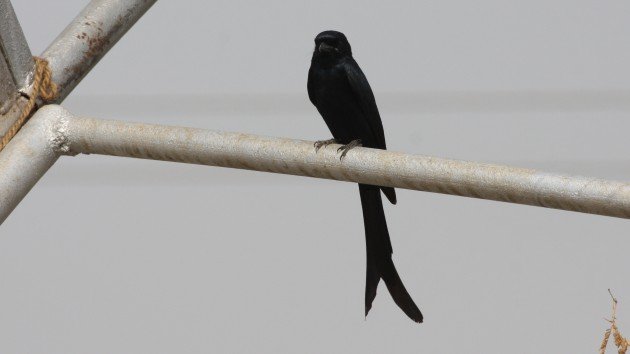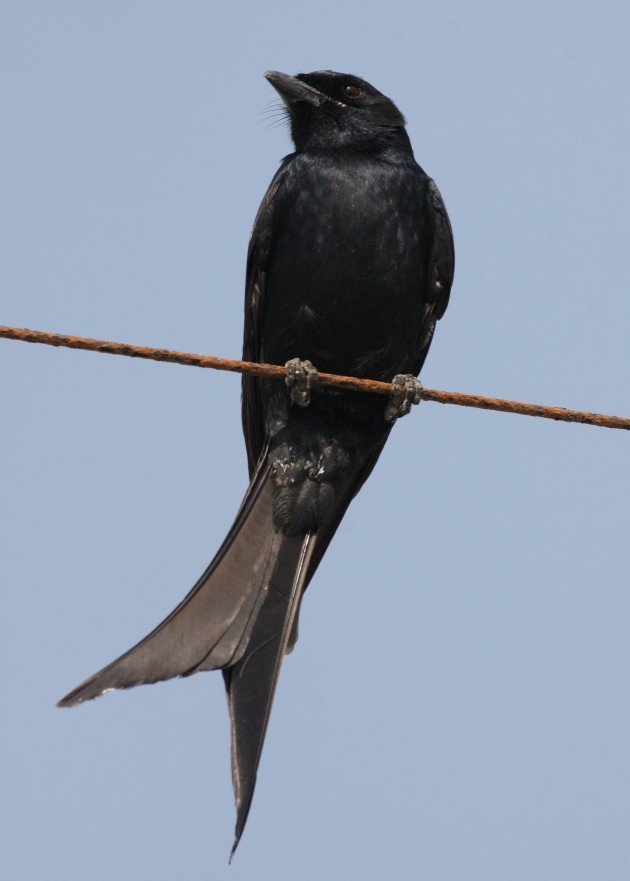
The family Tyrannidae, the tyrant flycatchers, are found only in the New World. We’re truly lucky we have them if for no other reason than to point at them as holder of some of the most difficult identification challenges on the continents. Sure, Old World Aquila eagles are hard, and the warblers are near-impossible, and the less said about the many splits of the gull formerly known as Herring the better, but in the battle for birder supremacy Team North America could always point to the tyrant flycatchers and say without any exaggeration “Have you had a look at Empidonax? And once you’ve got them nailed down let’s move over the Elaenias for a real challenge.” So at least we have that.
But while the actual Tyrant Flycatchers are absent from the rest of the globe, the niche filled by aggressive upright perching passerines which sally after flying insects from exposed perches is one what is simply too good, too obvious, to evolutionarily pass up. But surprisingly, this niche is not frequently filled by the birds Eurasian birders call flycatchers, which are those more chat-ish species in the family Muscicapidae. No, the job of raptor-bothering and wasp snatching falls to a unique group of birds which share several of the same physiological characteristics of Tyrant Flycatchers despite not being related to them in the slightest. Those birds, which popped up along every elevated perch during my time in India were by and large Black Drongos.
Aside from the deeply-forked tail and all-over glossy iridescence, from a distance these birds very much recall the kingbirds that will soon be taking up their spots alongside rural roads continent wide. They have the precise demeanor, and even similar non-musical chirpy call notes, that must be an advantage for this lifestyle if two groups of birds evolved separately to do so.
Even more, the large head and broad based beak are the same. The so small as to almost seem absent legs and dainty feet are the same and remarkably, the rictal bristles, those specialized feathers that surround the birds’ gape that effectively turn the mouth into a small net, are still here, as some photos of the birds from below can attest.
Around the site where the Global Bird-watching Conference was being held, Black Drongos were perhaps the most common bird around, and it was not unusual to find one or two on power lines, roofline, chained-link fence, scaffolding, or mid-sized shrubs, sitting still with that forked tail whipping every which way in the stiff wind. They were so common that it wasn’t long at all until they were just another bird in the background as I, and the rest of the birders present for the conference, went about trying to find things just a little more exciting, which is an odd thing to say when you’re talking about a bird with glossy black feathers and a crazy forked tail. But on the last day, in my last hours in Kutch, I pulled out my camera and aimed it at these incredibly common, but incredibly charismatic birds.
That done, I piled into a bus and began counting the power line drongos back to Ahmedebad and home.













Very interesting comparison, Nate. I just saw my first drongos in Singapore and Malaysia not long ago, but didn’t see the kingbird connection, probably because I encountered the different species in forests. Very cool birds no matter where you find them and the variety is intimidating!
Nice comparison! I wonder how many, or how few, birds would be left if we collapse them all down to behavioral niches like “kingbird niche”. That would be a fun exercise.